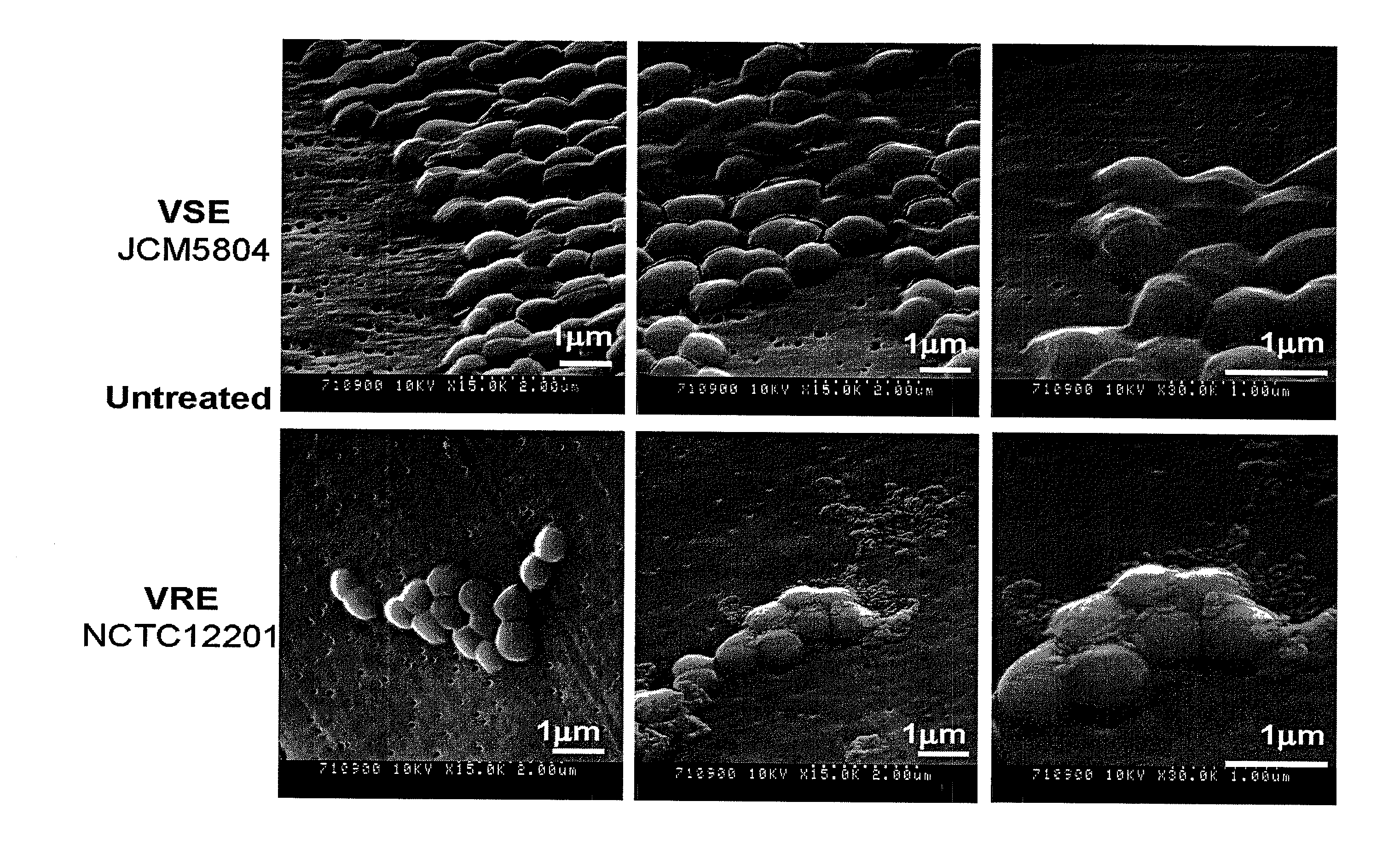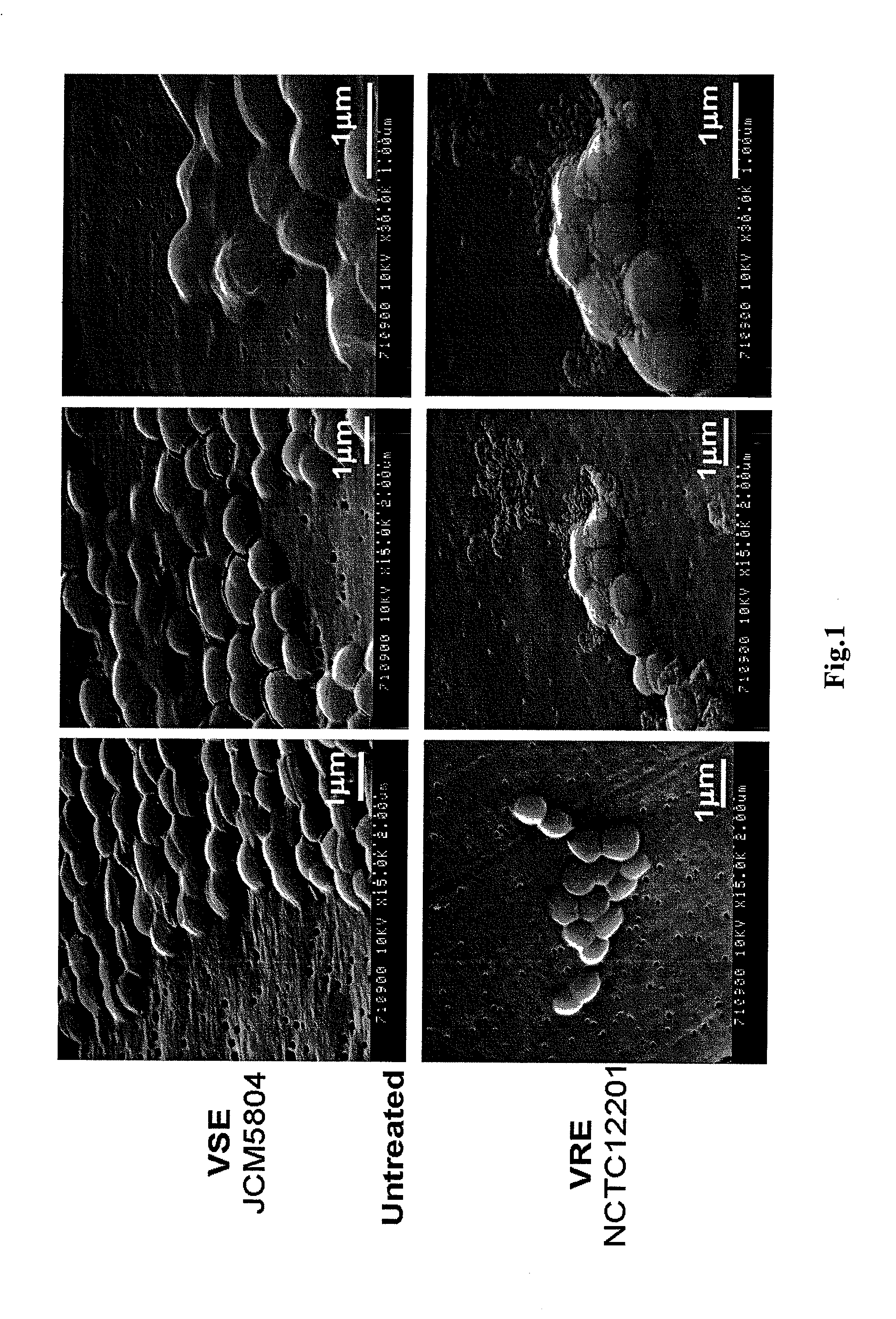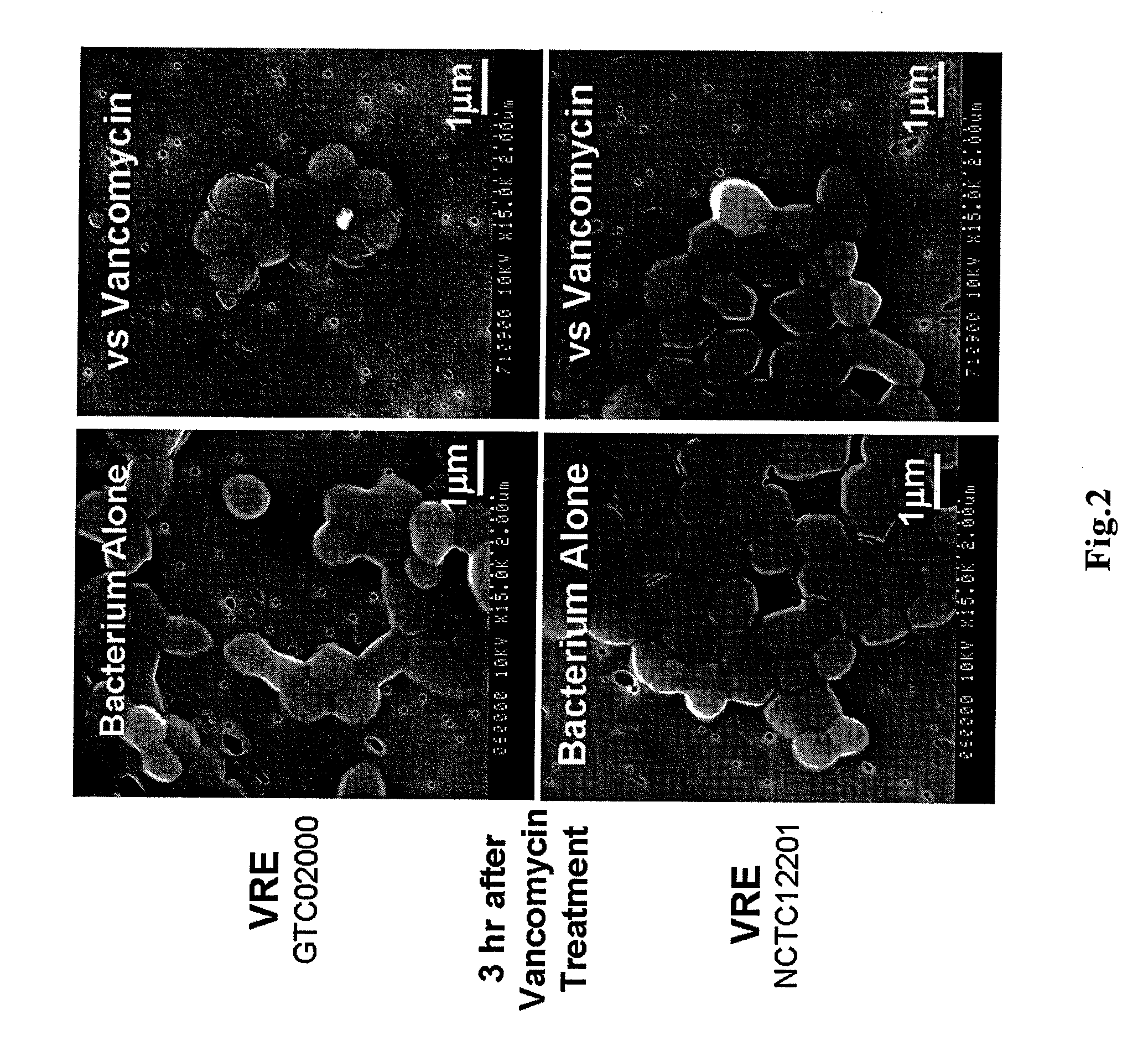Antimicrobial agent for gram-positive bacteria
a technology for gram-positive bacteria and antibacterial agents, which is applied in the direction of antibacterial agents, natural mineral layered products, cellulosic plastic layered products, etc., can solve the problem of insufficientness and achieve the effect of confirming the safety of human health
- Summary
- Abstract
- Description
- Claims
- Application Information
AI Technical Summary
Benefits of technology
Problems solved by technology
Method used
Image
Examples
production example 1
Production of Cyanoacrylate Polymer Particles
(Dextran, and Dextran+Glucose Reaction Systems)
[0038]Cyanoacrylate polymer particles were produced using nBCA (Histoacryl (registered trademark), Braun, Melsungen, Germany) as a monomer. As a polymerization initiator / stabilizer, dextran alone or dextran +glucose were used. The average molecular weight of dextran used herein was 70K (Dex70).
[0039]In 100 ml of hydrochloric acid, (1) 1 g of Dex70 or (2) 1 g of Dex70 and 5 g of glucose were dissolved. The concentration of the used hydrochloric acid was 0.05 N, 0.01 N, and 0.001 N. To the respective solutions, 1.2 mL of nBCA (concentration in the reaction solution: 1.2 v / v %) was added under stirring, and the resulting solutions were stirred (600 rpm) at room temperature for 2 hours to carry out polymerization reaction. Thereafter, 0.1 N NaOH was added to the reaction solutions to neutralize them, and the resulting solutions were stirred for 15 minutes. The reaction solutions were filtered thr...
example 1
Antibacterial Activity of Cyanoacrylate Polymer Particles
(Dextran, and Dextran+Glucose Reaction Systems)
[0041]The antibacterial activity (minimum inhibitory concentration (MIC) and minimum bactericidal concentration (MBC)) of the particles prepared in Production Example 1 was examined against various bacterial strains. Ampicillin (ABPC) was used as a positive control. The measurement was carried out in accordance with a broth microdilution method (NCCLS). That is, 256 μg / ml of ABPC solution and 6.4 mg / ml of particle suspension were prepared as undiluted solutions (1-fold dilution), and each undiluted solution was 2-fold serially diluted up to 2048-fold to prepare 12 concentrations in total, which were used for assessing the antibacterial activity. These serial dilutions were placed in a 96-well plate, and a bacterial strain was added to each well at an amount of 105 CFU / ml, followed by incubation at 35° C. for 18 hours. In the case where turbidity was visually observed, it was judge...
production example 2
Production of Cyanoacrylate Polymer Particles
(Glucose, Ribose, Lactose, and Trehalose Reaction Systems)
[0045]Cyanoacrylate polymer particles were produced using nBCA (Histoacryl (registered trademark), Braun, Melsungen, Germany) as a monomer. As a polymerization initiator / stabilizer, glucose, ribose, lactose or trehalose was used.
[0046]The same procedure as in Production Example 1 was carried out except that 5 g of any one of the above-described monosaccharides and disaccharides was used as a saccharide to produce polycyanoacrylate particles (0.05NHCl-Glucose, 0.05NHC1-Ribose, 0.05NHCl-Lactose, 0.05NHCl-Trehalose, 0.01NHCl-Glucose, 0.01NHC1-Ribose, 0.01NHCl-Lactose, 0.01NHCl-Trehalose, 0.001NHCl-Glucose).
[0047]He.Ne laser light scattering analysis was performed using a commercially available measurement apparatus (supra) to measure the average particle diameter and the zeta-potential of the obtained particles. The results are shown in Table 5.
TABLE 5AverageparticlePeakdiameterwidthZ...
PUM
| Property | Measurement | Unit |
|---|---|---|
| Electric potential / voltage | aaaaa | aaaaa |
| Electric potential / voltage | aaaaa | aaaaa |
| Particle diameter | aaaaa | aaaaa |
Abstract
Description
Claims
Application Information
 Login to View More
Login to View More - R&D
- Intellectual Property
- Life Sciences
- Materials
- Tech Scout
- Unparalleled Data Quality
- Higher Quality Content
- 60% Fewer Hallucinations
Browse by: Latest US Patents, China's latest patents, Technical Efficacy Thesaurus, Application Domain, Technology Topic, Popular Technical Reports.
© 2025 PatSnap. All rights reserved.Legal|Privacy policy|Modern Slavery Act Transparency Statement|Sitemap|About US| Contact US: help@patsnap.com



